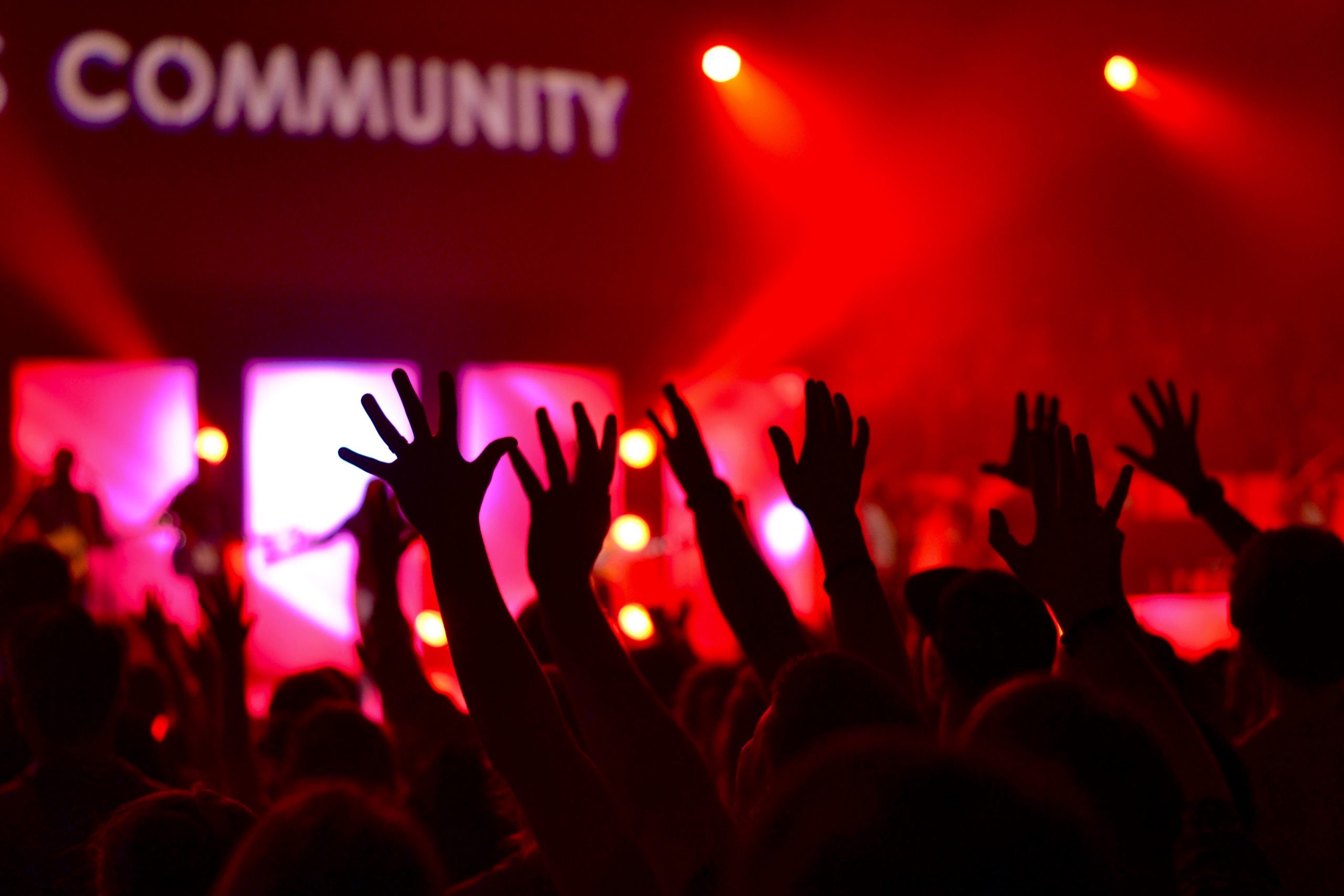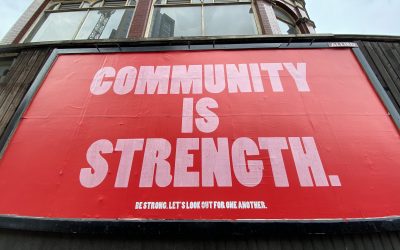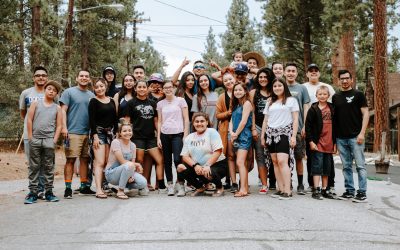We are all part of different communities. From our local communities (your street) right up to nationwide groupings (your political party, consumer demographics etc), we are all part of something. While many of the communities are non-interactive and just being part of the audience makes you a member, there are of course communities that we actively *choose* to be a part of. As many of you will know, I am part of two distinctive communities that I participate in – *Free Software* and *Metal*.
I often compare and contrast the two communities, and when I was younger I felt quite emotionally torn between the two. I remember being 16 and battling with myself as to whether I enjoyed playing my guitar more or enjoyed using BBSs more. On one side, the guitar thing was cool, likely to attract women and more of a physical and artistic endeavour that played to my creative side. I am also a physical person and the buzz I get from playing a guitar (creative but defined) and from playing drums (raw physicality) appeal to my different sides. Then, contrast this with computers. Obviously far less cool in the minds of most, but my interest in computers flexed my mental muscles and a different type of social muscle. On one side the music side of me gets me out to gigs, drinking with people, headbanging, dancing, stage diving etc, but the computer side, and particularly around that time, put me in touch with people *all over the world*. This was a *huge* buzz and incredibly exciting.
But, I was torn. Which group did I want to fit into? Life could have certainly turned out quite different if I had picked one over the other, and I found it difficult to figure out what I wanted from life and which box I wanted to fall into. As time went on, my interests naturally moved me in different directions as I explored these different areas.
One such example is that I totally screwed up my A-Levels. I joined a band (called Conspiracy) which was well established and spent lots of time performing live. Although I was always a consistent worker at school, this experience was so mind blowing that it got in the way of school work and my mind was always focused on playing to crowds of sweaty metallers who would elegantly beat the shit of each other on the dancefloor to our music (for a better explanation of such beatings, see the [Wikipedia Moshing article](https://en.wikipedia.org/wiki/Moshing)). Likewise, as time went on, I found myself increasingly interested in Linux. I spent my year out between A-Levels and University working in Cranfield Bookshop in Milton Keynes, and with very little work to do and a business that was being sold to Waterstones, I spent my days just reading the computer books there. After the year was out, I had read most of the books I was interested in, and I used to wear self-printed Linux t-shirts to advocate Linux to people who came into the shop.
I was two people – Linux t-shirt wearing Linux fan by day, Overkill t-shirt wearing metaller by night. Mentally, the two sides were still separate, but as time meandered on, they meshed into the same person. Why should I have these separate sides? Why can’t I be one person with both? Surely it would be good to influence both sides with their merits? The stuffier technical corners of the Linux world could do with some of the raw social input from the metal world, and the metal world could do with some of the thinking and structure of the Linux world. It was then that I realised that community cannot live in a vacuum; well, it can, but it suffers greatly if it does.
Even within specific sub-communities, internal bickering can cause divides. A great example is the metal world. There are a great many styles of metal, such as:
* **Heavy Metal** – traditionally anthemic, like a heavy version of rock. Examples include *Iron Maiden* and *Black Sabbath*.
* **Thrash Metal** – a combination of Heavy Metal and Punk, fast, speedy metal, clear vocals and chunky-ish guitars. Examples include *Metallica*, *Megadeth* and *Exodus*.
* **Black Metal** – metal that focuses on Satan and upside down crosses, screechy growly high vocals, often deliberately produced to sound like it was recorded in a dustbin, aside from Satan the subject is often cold weather, artists wear make-up and look like badgers. Examples include *Immortal*, *Cradle Of Filth* and *Mayhem*.
* **Death Metal** – thick, chunky, aggressive metal with growly vocals where the vocals are more of an instrument than a vocal (less melody and more rhythm), often subjects are about violence and squalor, very cool. Examples include *Decapitated*, *Cannibal Corpse*, *Deicide* and *Napalm Death*.
* **Power Metal** – anthemic, German sounding, speedy, high singing vocals, often sing about being a brother of true metal, spandex essential, excellent. Examples include *Manowar*, *Stratovarius*, *Primal Fear* and *Helloween*.
* **Hardcore** – thick, crunchy, rhythmic, shouty vocals, subject matter typically rebellion and honour, dancing is a combination of moshing and karate, listeners often look like chavs, very cool. Examples include *Hatebreed*, *Raging Speedhorn* and *Stamping Ground*.
* **Stoner Rock** – does exactly what it says on the tin, loose, groovy, usually sung vocals. Examples include *Black Label Society*, *Down* and *Spiritual Beggars*.
* **Industrial** – slightly dancy, machine like, very rhythmic and accessible, listeners are often strange. Examples include *Nine Inch Nails* and *Rammstein*.
* **Mathcore** – take Hardcore or Death Metal and apply crazy time signatures that make it impossible to headbang to. Examples include *Cryptopsy* and *Meshuggah*.
* **Speed Metal** – thrash turned upto 11. Examples include *Cacophony* and *The Great Kat*.
Each of these different sub-styles of metal are often very cynical to the other sub-communities. As an example, a Thrash Metal fan may be sneering to an Industrial fan, despite having so much in common. Each community has this view because a community not only instills an ethic, but also a gauge of *how true* you are to that community. Power Metal fans are particularly affected by this as their style is not just about music but about being a real *brother or sister of metal*. This may sound crazy to many of you, but it is deep in the hearts of people who listen to that style of music. *If you are not into metal, you are not my friend*.
This is all understandable – we are social creatures and we form our own groupings, but when we break these barriers down and work together interesting things happen. Take for example *Slipknot*. Traditionally from Death Metal bands, the jumpsuit-masked nutters combined Death Metal, Hardcore, Nu Metal, Thrash and bits of Drum n’ Bass to create a unique and interesting sound. They broke down the barriers, explored how they could combine different styles and community and hit on a winning formula. Not only did they creatively innovate but they broke down social barriers in the metal world – they opened peoples minds.
In recent years this kind of change has been rampant in the free software world. We are seeing different communities working together, breaking down social and technical barriers and exploring how we can do different things in different ways. While this is great, we need to always remain open to those *outside* our community – breaking down the barriers within the free software community is one thing, but we also need to realise that outside our wonderful community are so many interesting opinions, ideas and opportunities. It is an exciting time for free software and if we can harness our similarities and revel in our differences, we can do some amazing things.








